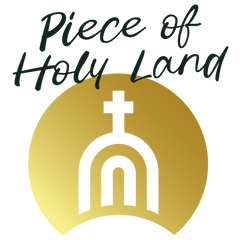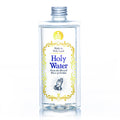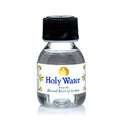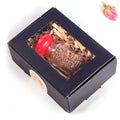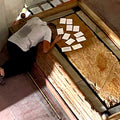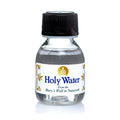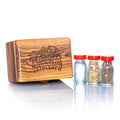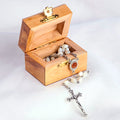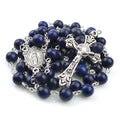Uncovering the Facts | Jordan River vs. Mary's Well Holy Water

Understanding Two Sacred Sources of Blessing and Renewal
The Jordan River: Waters of Baptism and Divine Revelation
The Jordan River flows through the heart of the Holy Land, carrying immense biblical and spiritual significance. It is perhaps most revered as the site of Jesus Christ’s baptism by John the Baptist (Matthew 3:13–17). This moment marked the beginning of His public ministry and revealed the Holy Trinity in a powerful way: the heavens opened, the Spirit descended like a dove, and the Father’s voice proclaimed Jesus as His beloved Son.
For Christians, this sacred event sanctified the Jordan River itself, transforming its waters into a symbol of purification, forgiveness, and new life in Christ. Pilgrims from around the world still travel to its banks to be baptized or to renew their baptismal vows, immersing themselves in the same waters that once touched the Son of God.
Even for those unable to make the journey, Holy Water from the Jordan River brings this blessing into daily life. Used in prayer, blessing homes, or in moments of illness, it serves as a reminder of baptismal promises and the renewal offered through Christ.
The Jordan River’s symbolism is deep and layered:
- Cleansing and purification – recalling Israel’s crossing into the Promised Land (Joshua 3:17).
- Spiritual rebirth – as seen in Jesus’s baptism, where He sanctified the waters for all who would follow.
- God’s grace made visible – water as a physical sign of invisible divine love.
Mary’s Well: A Fountain of Grace and the Annunciation
In Nazareth, another sacred water source flows, Mary’s Well, known locally as “Ain Maryam” or “The Spring of Mary.” According to Christian tradition, this well is the very place where the Archangel Gabriel greeted the Virgin Mary with the words, “Hail, full of grace, the Lord is with you” (Luke 1:28). The Annunciation, one of the most pivotal events in salvation history, unfolded here, marking the beginning of the Incarnation.

Mary’s Well also carries the memory of her daily life. As a young woman, she likely drew water here for her household, sanctifying the ordinary act of carrying water with extraordinary holiness. For believers, water from this spring is infused with the purity, humility, and obedience of the Blessed Virgin.
Today, Holy Water from Mary’s Well is cherished as a reminder of Mary’s protective intercession and her “yes” to God. Pilgrims collect the water as a sacred gift, bringing home not only a relic of the Annunciation but also a symbol of the Blessed Mother’s closeness in daily life.
Mary’s Well is revered for:
- Purity and faithfulness, embodied in Mary’s acceptance of God’s will.
- Maternal intercession, as the faithful turn to her for guidance and comfort.
- Sanctifying ordinary life, since Mary’s daily task of drawing water became part of salvation history.
Jordan River vs. Mary’s Well: Sacred Differences
While both waters are holy, their spiritual emphasis is distinct, complementing one another in Christian devotion.
- Jordan River – Baptism, renewal, forgiveness of sins, rebirth in Christ.
- Mary’s Well – Annunciation, purity, grace, and Mary’s maternal presence.
- Christ-centered symbolism – Jordan represents His mission and obedience.
- Mary-centered symbolism – The Well represents her humility and intercession.
For many Christians, having both waters in their home is a way to honor Jesus and His Blessed Mother together. One recalls His divine mission of redemption; the other reflects her faithful cooperation with God’s plan.
Holy Water in Christian Life and Prayer
Holy Water is more than a sacramental, it is a living tradition that continues to nourish believers across the centuries. Both the Jordan River and Mary’s Well can be incorporated into prayer life and special rituals:
- Blessing the home – Sprinkle Jordan River water at doorways to invoke God’s protection.
- Daily devotion – Use Mary’s Well water during the Rosary or Marian feast days.
- Blessing sacred objects – Holy Water can sanctify blessed crosses & crucifixes, rosaries, and icons.
- Healing prayers – During illness, sprinkling oneself with Jordan water while reciting Psalm 23 or Psalm 51 is a profound act of faith.
- Thanksgiving rituals – Use Mary’s Well water during family prayers to invite her intercession for peace and protection.
A Shared Heritage of Faith
Both waters testify to the living presence of God in the Holy Land. The Jordan River recalls the moment Jesus identified Himself with sinners through baptism, while Mary’s Well recalls the moment Mary opened her heart to God’s plan.
These waters also reflect the union of Christ and His Mother in the work of salvation. As Jesus sanctified the Jordan with His presence, so Mary sanctified her daily life at the Well with her obedience. Together, they point believers toward the mystery of the Incarnation and Redemption.
Bringing these two holy waters into one’s home allows the faithful to carry the Holy Land into their daily life, creating a tangible bridge to the places where salvation history unfolded.
Embracing Holy Water in Today’s World
In today’s fast-paced life, these sacramental traditions remain deeply relevant. Holy Water reminds us that God is present in both extraordinary and ordinary moments. Whether used to bless a home, mark a new beginning, or ask for healing, it provides a visible sign of invisible grace.
Through the Prayer Request Service at the Church of the Holy Sepulchre, even those far from Jerusalem can connect their prayers to the holiest Christian sites. In the same way, having Jordan River or Mary’s Well water at home unites believers with centuries of pilgrimage, devotion, and faith.
Conclusion: Two Streams, One Faith
The Jordan River and Mary’s Well are not in competition but in harmony, representing two streams of the same faith. One flows with the baptismal grace of Christ, the other with the maternal intercession of Mary. Together, they invite believers into deeper prayer, stronger devotion, and renewed trust in God’s love.
Owning and using these sacred waters, whether sprinkling them during prayer, blessing crosses and crucifixes, or sanctifying a new home, keeps alive the living tradition of faith. They serve as daily reminders of the Gospel truths that unite Christians across the world and across centuries.
FAQ: Holy Water from the Jordan River vs. Mary’s Well
Q: Can I use Jordan River and Mary’s Well Holy Water for the same purpose?
Yes. Both are authentic Holy Waters blessed by their sacred origins. You can use them interchangeably for prayer, blessings, or protection, though many prefer Jordan River water for baptismal reminders and Mary’s Well water for Marian intercession.
Q: How is Holy Water from the Jordan River collected and blessed?
Jordan River blessed holy water is drawn by Christian communities in the Holy Land, often during or near feast celebrations like the Epiphany. Many suppliers, including Piece of Holy Land, ensure it is reverently prepared, bottled, and offered with certificates of authenticity.
Q: What makes Mary’s Well water special compared to other Holy Waters?
Mary’s Well is tied directly to the Annunciation and the life of the Virgin Mary, making it unique among sacramental waters. It symbolises purity, humility, and God’s favor, offering believers a maternal connection through Mary.
Q: Can Holy Water be used to bless objects like crosses or jewellery?
Yes. Catholics and Orthodox Christians traditionally bless items such as olive wood crosses, rosaries, and even homes with Holy Water. Doing so makes the object a tangible reminder of faith and God’s protection.
Q: How do I store Holy Water from the Holy Land properly?
Keep it in a clean, closed container, ideally a dedicated Holy Water bottle. Place it in a prayer corner or near your entryway for daily use.
SHARE:

